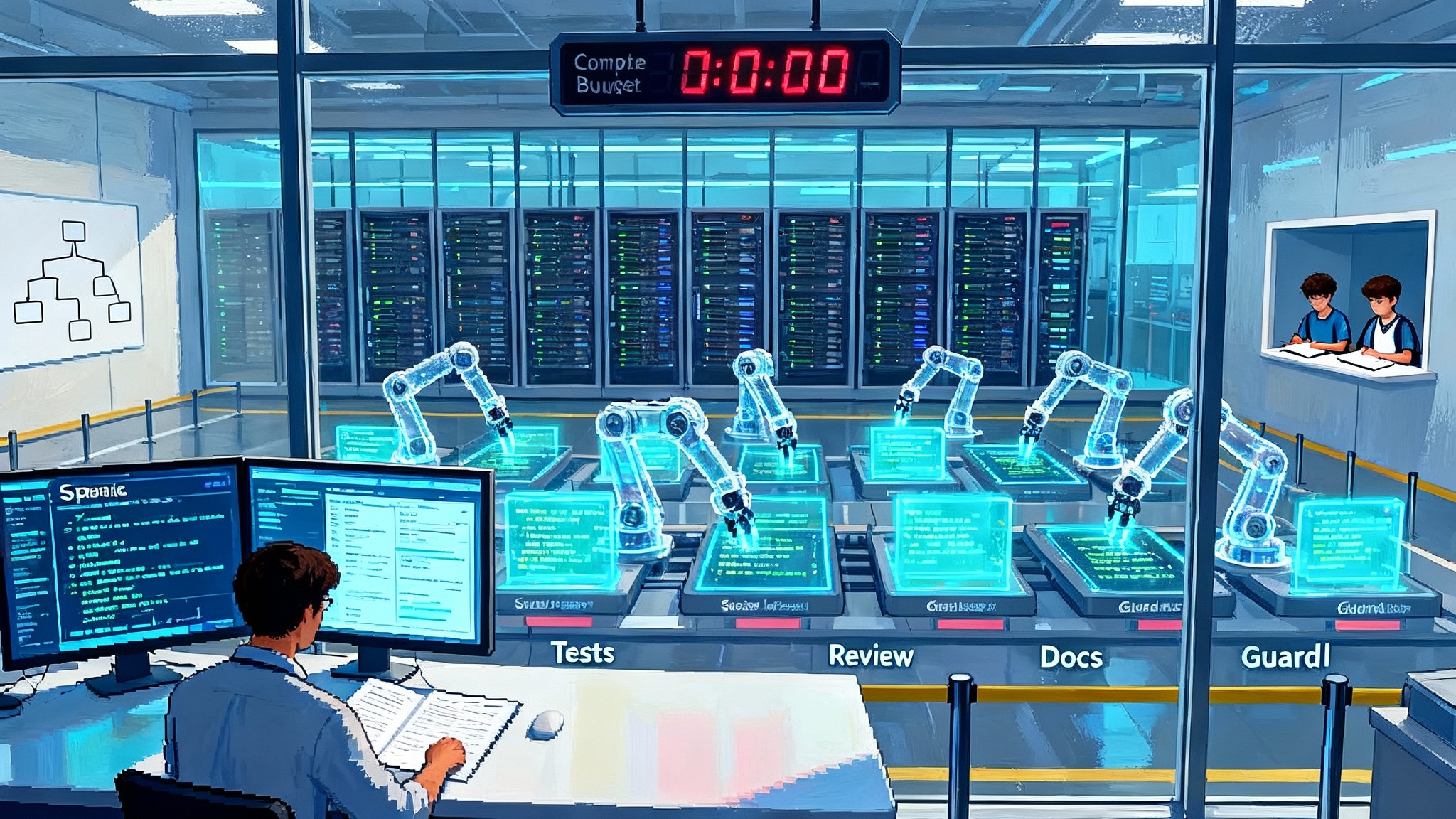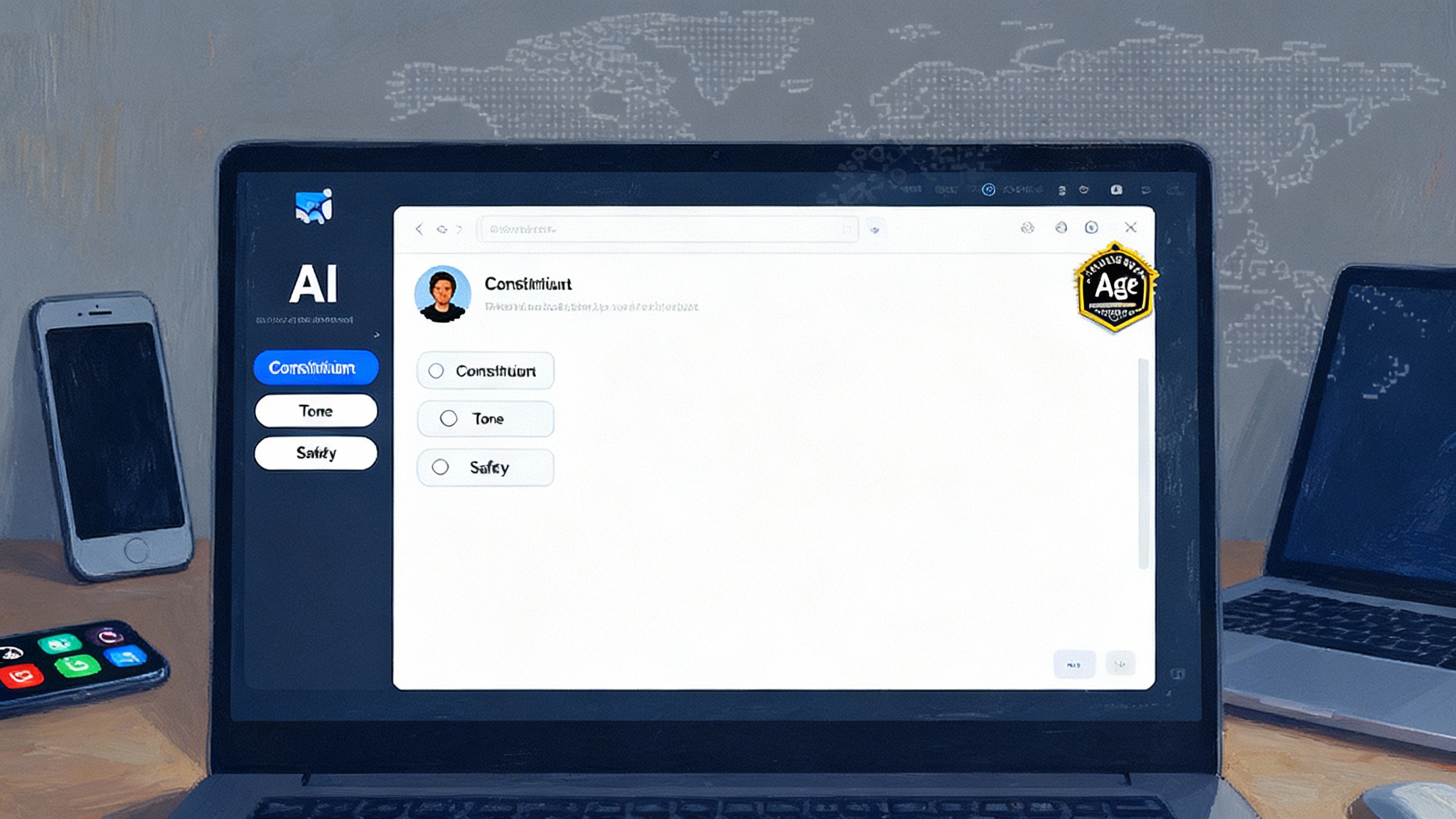Playbooks, Not Prompts: Skills Become Enterprise Memory
Prompts are giving way to a playbook layer. Anthropic, OpenAI, and Salesforce are packaging procedures into portable skills that agents can load, test, and audit, turning know-how into enterprise memory.

The pivot that ends prompt sprawl
For the past two years, many teams treated AI like a helpful intern who needed constant handholding. Every task began with a fresh prompt, and outcomes varied depending on who typed and how they phrased it. October 2025 is the moment that changes. Anthropic introduced Claude Skills on October 16, OpenAI introduced AgentKit on October 6, and Salesforce launched Agentforce 360 the week of October 13. Different companies, one direction. Instead of improvising with prompts, enterprises are standardizing how work gets done with portable skills that agents can load, execute, and audit.
If a prompt is a sticky note, a skill is a playbook. Prompts are hard to govern, hard to reuse, and easy to lose. Skills have owners, versions, tests, and permissions. Flip that switch and your organization stops relearning the same lessons each month. It starts to remember.
To see the shift in motion, look at the vendor announcements. Anthropic introduced Claude Skills, a way to package instructions, scripts, and resources into a folder the agent can load when relevant. OpenAI introduced AgentKit to bring versioning, connectors, and evaluations into a single agent platform. Salesforce placed agent skills inside the systems where sales, service, and operations already work. Three paths, one pattern.
What a skill really is
A skill is not a longer prompt. It is a bundle that captures how your team completes a task from start to finish:
- Purpose. A clear outcome such as prepare the monthly revenue roll up or triage a Priority 1 incident.
- Steps. A procedure with preconditions, tool calls, fallbacks, and timeouts.
- Resources. Templates, example files, code snippets, data schemas, and reference policies.
- Guardrails. Allowed tools, data scopes, escalation rules, and compliance checks.
- Tests. Sample inputs and expected outputs, coverage criteria, and regression cases.
- Metadata. Version, owner, reviewer, change history, and risk label.
Think of it like a software package for work. The skills that matter most are specific enough to be reliable and modular enough to combine. In practice, that means your invoice dispute skill can call a ledger reconciliation skill and a customer communication skill without asking a human to glue them together.
Two of October’s launches sharpen this model. Anthropic introduced Claude Skills so teams can build and deploy these bundles across Claude apps, Claude Code, and the API. OpenAI introduced AgentKit with an Agent Builder for multi agent workflows, a Connector Registry for data and tools, and built in evals to measure progress. You can read the official notes from the vendors if you want the details: Anthropic introduced Claude Skills and OpenAI introduced AgentKit.
From skills to a Skill Graph
When you have a dozen skills, you start to see relationships. The quarterly close skill depends on revenue recognition and expense accruals. The incident triage skill sometimes calls customer communications and rollback procedure. The natural next step is to treat skills as nodes and their dependencies as edges. That is your Skill Graph.
In a Skill Graph, each node carries versions, owners, tests, and risk levels. Edges carry preconditions, postconditions, and data contracts. The graph tracks lineage, such as which skills came from a shared library or were forked from a partner template. This structure unlocks two practical benefits:
-
Impact analysis before changes. If you update revenue recognition rules, you can see which downstream skills and departments are affected before you ship.
-
Smarter scheduling. Agents can plan work with awareness of prerequisites and conflicts. If a deployment skill requires an approved rollback plan, the scheduler knows what to run first and what can wait.
You do not need a new job title to manage a Skill Graph. You need the same habits your software and data teams already use. Version control, review, change management, and telemetry bring order to what used to be prompt chaos.
Why the playbook layer beats prompting
- Repeatability by default. A prompt sits in a tab. A skill sits in a repository with tests. Predictability becomes normal.
- Governance inside the workflow. Skills ship with least privilege access, scoped context, and audit trails. You stop bolting on controls after the fact.
- Composability that scales. Skills can call other skills and reuse evaluators. Humans do not have to babysit every handoff.
- Portability in practice. With standard connectors and protocols, the same skill can run on different runtimes with minor translation. Vendor lock in goes down and marketplaces become possible.
This is not anti creativity. It is pro reliability. When your security lead, compliance officer, and business owner agree on a packaged skill that is tested and logged, the team moves faster without losing control.
Ownership of institutional knowledge
Every company already owns a playbook. It is just scattered across docs, wikis, inboxes, and veteran memories. Skills turn that scattered playbook into a durable asset. Four shifts follow:
-
From people to packages. Nuance lives inside the skill with an owner and a changelog. You can transfer, fork, or retire it like code.
-
From inbox to graph. New hires browse the Skill Graph to learn how work flows, not a folder of random prompts.
-
From secrecy to selective sharing. You can export a redacted version of a skill for a partner without leaking internal tactics. Share vendor onboarding, keep negotiation logic private.
-
From recall to measurement. Skills carry tests and telemetry. You do not guess whether chargeback dispute resolution works. You graph pass rates, cycle times, and variance by region.
As you make this shift, your cost of turnover drops, onboarding speeds up, and core processes harden. The hidden prize is resilience. When teams change, tools change, or a crisis forces remote work, the enterprise still remembers how to operate.
Compliance stops being a speed bump
Auditors care about who did what, using what authority, and under which policy. In the prompt era, that was a mess. In the skill era, compliance sits inside the package.
- Attested runs. Each execution can log inputs, outputs, tool calls, approvals, and hashes of referenced resources. You get a provable trail without storing sensitive data in plain text.
- Policy as code. Guardrails live in configuration so teams can review and test them. Separation of duties is enforced by the runtime, not by reminders.
- Scoped context. A skill defines what data it can touch and under what conditions. That reduces the risk of an agent wandering into the wrong data store.
- Sign off checkpoints. For high risk steps, the skill pauses, summarizes the evidence, and asks for approval. Accountability becomes a clean handoff.
This structure does not guarantee regulator approval, but it makes your case clear. You can trace the event, prove the controls, and show that the workflow behaves the same way every time unless an authorized change is made.
What the big three changed in October
-
Anthropic. Claude Skills are composable, so teams can stack multiple skills when a task demands specialized knowledge plus a standard workflow. Skills work across Claude apps, Claude Code, and the API, making them a common format for expressing how work gets done.
-
OpenAI. AgentKit brings versioning, a visual builder for multi agent flows, centralized connectors for tools and data, and built in evaluations. It also pushes reinforcement fine tuning for agents, so models learn to call the right tool at the right moment.
-
Salesforce. Agentforce 360 puts agent skills inside CRM, service, analytics, and collaboration. It layers governance and reasoning controls and meets buyers where they already live, including Slack and Google Workspace.
The variety is healthy. It increases the chance that skills will be portable even when runtimes differ.
Design your first Skill Graph in 90 days
You do not need a moonshot. You need a narrow scope, crisp definitions, and real measurement.
-
Pick three workflows that recur weekly and cause pain. Month end revenue roll up, invoice dispute handling, renewal quote preparation. Choose work with structured data and obvious handoffs.
-
Author a skill per workflow with five parts. Purpose, steps, resources, guardrails, tests. Keep version 1 narrow so it is reliable before it is broad.
-
Wire least privilege access. Give each skill its own identity and tool scopes. Use just in time elevation for rare steps that need higher privileges, then drop them.
-
Write a test harness. Take ten real inputs and the correct outputs from your best operator. Run both the agent and the human on the same set weekly. Publish the chart.
-
Assign a steward for each skill. The steward is not the manager. They protect reliability and approve changes that improve safety and repeatability.
-
Draw the first Skill Graph. Map dependencies and data contracts between skills. Mark which skills may call which others. Review monthly.
-
Establish change control. Use pull requests, peer review, and a weekly release train. Treat skill changes like code changes.
By day 90 you will have a living Skill Graph and the muscle memory to maintain it.
What will trade in the marketplace
As skills mature, they start to look like modern software packages. Signed, versioned, and distributed through catalogs. Some live inside the company. Some are partner visible. A few go on sale.
What will sell:
- Industry compliant skeletons. Templates for KYC checks, claim adjudication, or safety case creation. Buyers add local policy files and connectors.
- Boring but vital integrations. A bank grade reconciliation skill for a specific core ledger. A facility handover skill that speaks a common building management system.
- Evaluators. Tests are as valuable as the skills they guard. High quality evaluation bundles for healthcare eligibility or shipping compliance will command real prices.
What will not sell:
- Pure strategy. A media company’s advertiser retention logic will not translate well. It is tied to local data and brand.
- Unverified claims. Any package without tests, lineage, and performance telemetry will be ignored.
Expect platforms to add catalog features for attestation, risk ratings, and update channels. The storefronts may differ, but the direction is the same.
New roles you will need
- Playbook engineer. Part process designer, part developer, part quality lead. Translates expert know how into skills with tests.
- Skill librarian. Owns the catalog, approves new entries, manages deprecations, and coordinates with security and compliance.
- Human in the loop designer. Identifies checkpoints where an approval changes risk and outcome, then designs summaries with the right evidence.
New risks you must manage
- Lock in. If your skills depend on proprietary features, portability drops. Keep a clean interface that separates steps from host specific plugins.
- Drift. Over time, skills grow branches to handle one offs. Require new tests for every new branch so reliability does not silently erode.
- Shadow skills. Talented employees will build private skills to move faster. Counter this with a welcoming central catalog and a clear path from experimental to approved.
How this reshapes competition
In the prompt era, the advantage often walked out the door when an employee left. In the playbook era, advantage accrues to teams that can design, govern, and evolve a Skill Graph faster than rivals. The graph captures institutional knowledge, makes it reusable, and reduces time to reliability.
Three practical implications:
- Faster partnerships. You can exchange skills the way teams exchange API specs today. Integration time shrinks.
- Audits as differentiators. If you hand a regulator a skill package with tests, logs, and approvals, you win time and trust.
- Talent market shift. Operators will showcase portfolios of published skills and evaluators. Hiring becomes a review of packages as much as interviews.
For a look at how similar shifts have played out in other corners of AI, see how supervision changed software in humans edit models write code, how risk learning is evolving in an aviation style safety mindset, and why winning teams plan for compute as the new utility.
The next 24 months
Quarter 1 to Quarter 2. Stand up the catalog and your first ten skills. Measure pass rates and cycle time. Build the first Skill Graph and assign stewards. Begin a monthly governance council.
Quarter 3 to Quarter 4. Connect skills across departments. Add shared evaluators for quality and safety. Introduce attested run logs. Pilot a redacted skill with a partner.
Quarter 5 to Quarter 6. Launch a curated internal marketplace. Publish packages with version guarantees and update channels. Negotiate a two way skill exchange with a supplier. Publish non sensitive evaluators that demonstrate your standards.
By the end of two years, you will either have a Skill Graph that lets you move faster with more control, or you will be chasing competitors who do.
The conclusion: teach the enterprise to remember
Prompts were training wheels. Skills are road rules, lane markings, and the map. Package know how with tests and governance, and your company stops relearning what it already knows. The playbook layer is not flashy, but it is where reliability meets speed. The winners of 2026 will be the teams that teach their enterprise to remember, one skill at a time.








